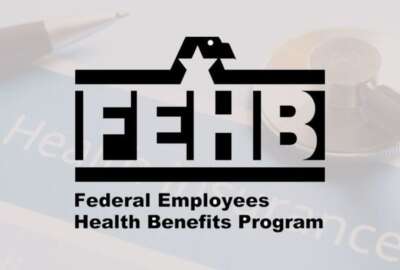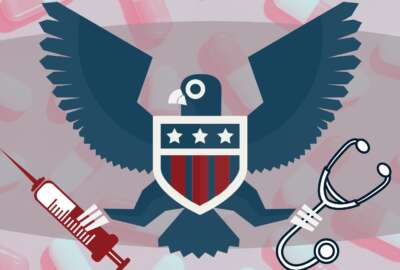There’s a catch in USPS insurance program for Medicare-eligible retirees
USPS annuitants who opt out of Medicare Part D will lose underlying prescription drug coverage, according to OPM’s regulations.
As preparations ramp up to launch a new health insurance program for the Postal Service, the Office of Personnel Management is anticipating the possibility that some USPS annuitants will opt out of Medicare prescription drug coverage without realizing the full consequences.
For USPS employees and annuitants, Open Season will look somewhat different this fall. In tandem with the standard open enrollment period for participants in the existing Federal Employees Health Benefits (FEHB) program, all USPS employees, annuitants and their family members will have to switch into the new Postal Service Health Benefits (PSHB) program.
As part of PSHB’s launch for plan year 2025, all Medicare-eligible USPS enrollees will be automatically enrolled in a prescription drug plan (PDP) through the program, including Medicare Part D prescription drug coverage. Those who are not eligible for Medicare will receive prescription drug benefits through their PSHB plan’s coverage, according to OPM’s proposed regulations.
Since eligible PSHB participants aren’t required to be enrolled in Medicare Part D — the section of Medicare that provides coverage of prescription drugs — OPM has planned for an option to opt out of the coverage, if a PSHB participant desires.
But there is a crucial catch: Medicare-eligible USPS annuitants who opt out of a PDP will lose all underlying prescription drug benefits through PSHB, according to OPM’s regulations. Any individual who opts out would still retain other plan benefits, aside from prescription drugs.
In its proposed regulations for the new PSHB program, OPM asked for feedback on how best to mitigate the risk of “inadvertent disenrollment,” as well as how to educate Part D-eligible individuals on the details of the new PSHB program.
“Permitting individuals to decline Part D may present a risk that individuals may fail to enroll in, or inadvertently disenroll from the Part D [plan], which would result in loss of access to prescription drug benefits under the PSHB plan while paying the full premium,” OPM explained in its proposed regulations, first published in May.
Most USPS retirees ‘better off’ keeping Part D
Based on the way OPM has set up the program, federal benefits experts have said even though there will be an option to do so, there’s virtually no situation where a PSHB enrollee would be better off opting out of Part D.
Even in cases where higher-income retirees subject to Income-Related Monthly Adjustment Amount (IRMAA) charges might think about opting out, there are still significant reasons not to pull out of the program. Tammy Flanagan, a federal benefits and retirement expert at Retire Federal, said annuitants will still have to pay the same IRMAA costs if they enroll in a commercially available Part D plan, along with an additional premium.
“I cannot think of an example of where an annuitant would be better off opting out of the PSHB Employer Group Waiver Plan,” Flanagan wrote in an email. “[PSHB Part D] plans are exempt from certain rules that apply to commercial Medicare plans, which allows more flexibility with enrollment periods, premiums and marketing. The PSHB Part D plans can offer benefits and services beyond what traditional Medicare plans offer, like coverage through the Part D gap, also called the ‘donut hole,’ and coverage of drugs that may not be on the Medicare formulary, but were previously offered under the PSHB plan’s drug benefit.”
Because of the potential losses, OPM said it expects “very few” PSHB enrollees to opt out of Part D coverage. The vast majority of individuals eligible for Part D are better off keeping the coverage, and there will be “seamless coordination” between PSHB plans and Medicare, OPM said.
But John Hatton, staff vice president for policy and programs at the National Active and Retired Federal Employees Association (NARFE), expressed concerns about the possibility that some participants in the upcoming PSHB program could opt out — whether for attempting to avoid IRMAA charges, retaining the option to use prescription drug coupons or simply thinking they’re not interested in Part D coverage — without realizing the consequences.
“[OPM] wants to create an easy opt-out provision. That makes sense for the FEHB plans because you have drug coverage that you’re left with,” Hatton said in an interview. “But I would worry about [PSHB enrollees] saying, ‘I don’t really want this, I’m going to opt out, and then they find out that they don’t have the underlying coverage.’”
Questions remain about Part D options
At the same time, NARFE questioned OPM’s choice in the first place to remove underlying prescription drug coverage for anyone who opts out of Medicare Part D. NARFE pointed to what the organization said is a disparity between the program requirements first laid out in the 2022 Postal Service Reform Act, and what OPM wrote in its PSHB regulations.
The potential loss of coverage creates “an enforcement mechanism, which is not specified in the statute, for a requirement that it concedes does not exist,” NARFE National President William Shackelford wrote in a June letter to OPM. “Essentially, OPM states that the statute does not require Medicare-eligible annuitants to enroll in Part D for their prescription drug coverage, but its proposed rule requires it anyway.”
Prescription drug plans were first folded into the Federal Employees Health Benefits (FEHB) program for plan year 2024, after the Inflation Reduction Act made changes to Medicare that made Part D coverage more valuable. The legislation created out-of-pocket spending caps, limited how much the costs of certain drugs could increase, capped catastrophic coverage and placed limits on Medicare Part D premium increases.
The same type of plans will be available through PSHB, but the loss of underlying prescription drug coverage for those who opt out is different from the way FEHB is set up. FEHB participants, by contrast, retain coverage for prescription drugs, even if they opt out of Part D.
“This will potentially be a significant difference between a Postal Service plan and an FEHB plan in terms of choice of this Medicare Part D coverage,” Hatton said. “The federal plan will have the choice. And the postal plan will not.”
What USPS retirees need to know
Other commenters on the proposed PSHB regulations urged OPM to be very clear in explaining the consequences of opting out of Part D to PSHB enrollees.
“We agree that it is crucial for enrollees to have the option to opt out and that education regarding the consequences of that decision will need to be clearly outlined for annuitants,” Kate Gonzalez, UnitedHealthcare’s vice president of federal programs, wrote in comments on the regulations.
PSHB enrollees who do opt out will be able to opt back in at the “next available opportunity,” OPM said. But adding to the challenges, if an individual wants to re-enroll in Part D at a later date, OPM said they may be subject to paying a late enrollment penalty for Medicare.
Some health carriers raised questions about the exact function of Part D re-enrollments. Carriers including GEHA are asking OPM to clarify when, and how often, that option would occur for enrollees.
The American Postal Workers Union branch of AFL-CIO, in comments on OPM’s PSHB regulations, said the requirement of “equal or greater” Part D coverage “is absolutely critical, especially if OPM imposes the consequence that dropping Part D means a loss of all PSHB prescription benefits.”
APWU also asked OPM to consider creating a narrow exception to the proposed rule of removing coverage for those who opt out, to allow for coverage to continue for those who are impacted by IRMAA.
Before Open Season, Hatton said he hopes “OPM takes another look at this, considers some of the arguments and reverses course. We’re supporting the people who could be better off by keeping that [underlying] coverage, number one. But number two, there are people who just may not trust this coverage, opt out inadvertently and then they’re left with no drug coverage. And I think that’s a worrying part of this.”
The PSHB program, which officially takes effect for plan year 2025, is designed to provide similar health insurance coverage to FEHB. USPS employees and annuitants will tentatively be able to select from 32 different carrier options. Those who don’t make a positive election during Open Season will be automatically enrolled into the lowest cost nationwide plan.
This year’s Open Season will run from Nov. 11 to Dec. 9. PSHB and FEHB elections made this fall will take effect in January for plan year 2025.
Copyright © 2025 Federal News Network. All rights reserved. This website is not intended for users located within the European Economic Area.
Drew Friedman is a workforce, pay and benefits reporter for Federal News Network.
Follow @dfriedmanWFED






